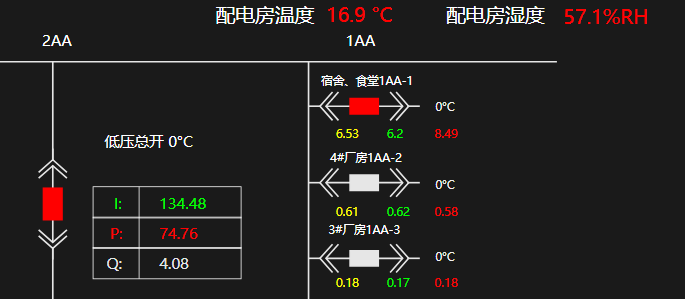жӮЁеҘҪпјҢзҷ»еҪ•еҗҺжүҚиғҪдёӢи®ўеҚ•е“ҰпјҒ
иҝҷзҜҮж–Үз« дё»иҰҒд»Ӣз»ҚvueеҰӮдҪ•е®һзҺ°еҸ‘йҖҒwebsocketиҜ·жұӮе’Ңhttp postиҜ·жұӮпјҢж–Үдёӯд»Ӣз»Қзҡ„йқһеёёиҜҰз»ҶпјҢе…·жңүдёҖе®ҡзҡ„еҸӮиҖғд»·еҖјпјҢж„ҹе…ҙи¶Јзҡ„е°Ҹдјҷдјҙ们дёҖе®ҡиҰҒзңӢе®ҢпјҒ
е…Ҳз»ҷеӨ§е®¶д»Ӣз»ҚдёӢvueеҸ‘йҖҒwebsocketиҜ·жұӮе’Ңhttp postиҜ·жұӮ
зӣҙжҺҘдёҠд»Јз Ғпјҡ
pdf.vue
<script>
import SockJS from 'sockjs-client';
import Stomp from 'stompjs';
import qs from "qs"
export default {
name: "pdf",
data() {
return {
newsData: [],
tagGuid_mx: "",
tagGuid_4AA_Ia: "",
tagGuid_4AA_P: "",
tagGuid_4AA_Q: "", 49 tagGuid_1AA_6_Ib: "",
tagGuid_1AA_6_Ic: "",
tagGuid_pdfwd: "",
tagGuid_pdfsd: "",
stompClient: '',
timer: '',
visibilityHeZha: "hidden",
visibilityFenZha: "hidden",
hezhaData:[]
}
},
methods: {
initWebSocket() {
this.connection();
let that = this;
// ж–ӯејҖйҮҚиҝһжңәеҲ¶,е°қиҜ•еҸ‘йҖҒж¶ҲжҒҜ,жҚ•иҺ·ејӮеёёеҸ‘з”ҹж—¶йҮҚиҝһ
this.timer = setInterval(() => {
try {
that.stompClient.send("test");
} catch(err) {
console.log("ж–ӯзәҝдәҶ: " + err);
that.connection();
}
}, 5000);
},
connection() {
// е»әз«ӢиҝһжҺҘеҜ№иұЎ
let socket = new SockJS('http://XXX.XX.XX.XXX:8081/energy-system-websocket');
// иҺ·еҸ–STOMPеӯҗеҚҸи®®зҡ„е®ўжҲ·з«ҜеҜ№иұЎ
this.stompClient = Stomp.over(socket);
// е®ҡд№үе®ўжҲ·з«Ҝзҡ„и®ӨиҜҒдҝЎжҒҜ,жҢүйңҖжұӮй…ҚзҪ®
let headers = {
access_token: "92c31bd5-ae43-4f25-9aad-c4eb1a92d61d"
// Authorization: ''
}
// еҗ‘жңҚеҠЎеҷЁеҸ‘иө·websocketиҝһжҺҘ
this.stompClient.connect(headers, () => {
this.stompClient.subscribe('/user/topic/data', (msg) => { // и®ўйҳ…жңҚеҠЎз«ҜжҸҗдҫӣзҡ„жҹҗдёӘtopic
console.log('е№ҝж’ӯжҲҗеҠҹ')
// console.log(msg); // msg.bodyеӯҳж”ҫзҡ„жҳҜжңҚеҠЎз«ҜеҸ‘йҖҒз»ҷжҲ‘们зҡ„дҝЎжҒҜ
console.log(msg.body);
this.newsData = JSON.parse(msg.body);
}, headers),
this.stompClient.subscribe('/user/topic/alarm', (msg) => { // и®ўйҳ…жңҚеҠЎз«ҜжҸҗдҫӣзҡ„жҹҗдёӘtopic
console.log('е№ҝж’ӯе‘ҠиӯҰжҲҗеҠҹ')
//console.log(msg); // msg.bodyеӯҳж”ҫзҡ„жҳҜжңҚеҠЎз«ҜеҸ‘йҖҒз»ҷжҲ‘们зҡ„дҝЎжҒҜ
console.log(msg.body);
this.newsData = JSON.parse(msg.body);
}, headers);
this.stompClient.subscribe('/user/topic/cmd_ack', (msg) => { // и®ўйҳ…жңҚеҠЎз«ҜжҸҗдҫӣзҡ„жҹҗдёӘtopic
console.log('дёӢжҺ§жҢҮд»Өеә”зӯ”жҲҗеҠҹ')
//console.log(msg); // msg.bodyеӯҳж”ҫзҡ„жҳҜжңҚеҠЎз«ҜеҸ‘йҖҒз»ҷжҲ‘们зҡ„дҝЎжҒҜ
console.log(msg.body);
this.newsData = JSON.parse(msg.body);
}, headers);
this.stompClient.subscribe('/user/topic/response', (msg) => { //жҢҮд»Өзҡ„еә”зӯ”пјҲд»…иЎЁзӨәжңҚеҠЎз«ҜжҺҘ收жҲҗеҠҹжҲ–иҖ…еӨұиҙҘпјү
console.log('SENDжҢҮд»Өзҡ„еә”зӯ”жҲҗеҠҹ')
//console.log(msg); // msg.bodyеӯҳж”ҫзҡ„жҳҜжңҚеҠЎз«ҜеҸ‘йҖҒз»ҷжҲ‘们зҡ„дҝЎжҒҜ
console.log(msg.body);
this.newsData = JSON.parse(msg.body);
this.newsData = this.newsData.data;
console.log(this.newsData);
for(var i = 0; i < this.newsData.length; i++) {гҖҖ
//жҜҚзәҝuab
if(this.newsData[i].tagGuid == "a3a95bf3-fef8-454e-9175-19a466e40c3d") {гҖҖгҖҖгҖҖгҖҖгҖҖгҖҖ
this.tagGuid_mx = this.newsData[i].value != '' ? this.newsData[i].value.toFixed(2) : ""
}
//з”өе®№жҹң4AA_Ia
if(this.newsData[i].tagGuid == "4cf6e256-6c3a-4853-a087-dfd263916dab") {гҖҖгҖҖгҖҖгҖҖгҖҖгҖҖ
this.tagGuid_4AA_Ia = this.newsData[i].valueгҖҖ
}
//з”өе®№жҹң4AA_P
if(this.newsData[i].tagGuid == "52e8265a-0a20-4e3b-a670-14a8df373bf7") {гҖҖгҖҖгҖҖгҖҖгҖҖгҖҖ
this.tagGuid_4AA_P = this.newsData[i].valueгҖҖ
}
//з”өе®№жҹң4AA_Q
if(this.newsData[i].tagGuid == "ef369a17-0bbd-4295-8ac7-816c23fcb065") {гҖҖгҖҖгҖҖгҖҖгҖҖгҖҖ
this.tagGuid_4AA_Q = this.newsData[i].value != '' ? this.newsData[i].value.toFixed(2) : 0гҖҖ
}276 //й…Қз”өжҲҝжё©еәҰ
if(this.newsData[i].tagGuid == "ead49446-07f9-43b7-a4ce-cd974d53728e") {гҖҖгҖҖгҖҖгҖҖгҖҖгҖҖ
this.tagGuid_pdfwd = this.newsData[i].valueгҖҖ
}
//й…Қз”өжҲҝж№ҝеәҰ
if(this.newsData[i].tagGuid == "baaf1733-124e-46fd-9d58-c069b747317a") {гҖҖгҖҖгҖҖгҖҖгҖҖгҖҖ
this.tagGuid_pdfsd = this.newsData[i].valueгҖҖ
}
}
}, headers);
this.stompClient.send("/app/monitor/subTagGuid", // # и®ўйҳ…йңҖиҰҒзӣ‘жҺ§зҡ„жөӢзӮ№ID
headers,
JSON.stringify({
"stationCode": "00013",
"tagGuids": [
"a3a95bf3-fef8-454e-9175-19a466e40c3d", //
"4cf6e256-6c3a-4853-a087-dfd263916dab", //
"52e8265a-0a20-4e3b-a670-14a8df373bf7", //
"ef369a17-0bbd-4295-8ac7-816c23fcb065", //334 "baaf1733-124e-46fd-9d58-c069b747317a"
]
})
) //з”ЁжҲ·еҠ е…ҘжҺҘеҸЈ
}, (err) => {
// иҝһжҺҘеҸ‘з”ҹй”ҷиҜҜж—¶зҡ„еӨ„зҗҶеҮҪж•°
console.log('еӨұиҙҘ')
console.log(err);
});
}, //иҝһжҺҘ еҗҺеҸ°
disconnect() {
if(this.stompClient) {
this.stompClient.disconnect();
}
}, // ж–ӯејҖиҝһжҺҘ
changeColor(evt) {
this.rect.setAttributeNS(null, "fill", "blue")
},
shl3aa4() {
this.visibilityHeZha = this.visibilityHeZha == "visibility" ? "hidden" : "visibility";
this.visibilityFenZha = this.visibilityFenZha == "visibility" ? "hidden" : "visibility";
},
shl3aa42() {
setTimeout(() => {
this.visibilityHeZha = "hidden";
this.visibilityFenZha = "hidden";
}, 1200)
},
hezha() {
//3#жҘј3AA-4_еҗҲй—ё
this.$axios.post("/energy-system/auth/monitor/ykcmd", {
checkUser: "admin",
checkPass: "123456",
stationCode:"00013",
tagGuid: "89d1d312-17be-4d20-8471-baa08ba734e0",
value: 1
})
.then(res => {
this.hezhaData=JSON.parse(res.config.data)
if(this.hezhaData.tagGuid=="89d1d312-17be-4d20-8471-baa08ba734e0" && this.hezhaData.value==1){
alert("еҗҲй—ёжҲҗеҠҹпјҒ");
}else{
alert("еҗҲй—ёеӨұиҙҘпјҒиҜ·иҒ”зі»з®ЎзҗҶе‘ҳ");
}379 })
.catch(error => {
console.log(error)
})
},
fenzha() {
alert("еҲҶй—ё"); //3#жҘј3AA-4_еҲҶй—ё
}
},
mounted() {
this.initWebSocket();
},
beforeDestroy: function() { // йЎөйқўзҰ»ејҖж—¶ж–ӯејҖиҝһжҺҘ,жё…йҷӨе®ҡж—¶еҷЁ
this.disconnect();
clearInterval(this.timer);
},
created() {
}
}
</script>еңЁmain.jsи®ҫзҪ®е…ЁеұҖhttpең°еқҖпјҡ
Axios.defaults.baseURL = 'http://XXX.XXX.XX.XXX:9001'; Axios.defaults.headers.post['Content-Type'] = 'application/x-www-form-urlencoded';
еңЁmain.jsдёӯи®ҫзҪ®headerдёӯtokenеҖјпјҡ
// ж·»еҠ иҜ·жұӮжӢҰжҲӘеҷЁ
Axios.interceptors.request.use(function(config) {
config.headers.access_token = "add7c097-f12b-40fe-8e48-6fe1f2120fa5";
// config.headers.Authorization = localStorage.token; //е°Ҷtokenи®ҫзҪ®жҲҗиҜ·жұӮеӨҙ
console.log("иҜ·жұӮ============" + config);
// еңЁеҸ‘йҖҒиҜ·жұӮд№ӢеүҚеҒҡдәӣд»Җд№Ҳ
return config;
}, function(error) {
// еҜ№иҜ·жұӮй”ҷиҜҜеҒҡдәӣд»Җд№Ҳ
return Promise.reject(error);
});
ж•°жҚ®еҲ·иө·жқҘпјҒ
psпјҡдёӢйқўз»ҷеӨ§е®¶д»Ӣз»ҚдёӢvue websocket иҜ·жұӮ
йҰ–е…ҲеҶҷдёҖдёӘе…¬е…ұж–№жі•
socket.js
function getSocket(url, params, callback) {
let socket;
if (typeof (WebSocket) === 'undefined') {
console.log('жӮЁзҡ„жөҸи§ҲеҷЁдёҚж”ҜжҢҒWebSocket');
} else {
console.log('жӮЁзҡ„жөҸи§ҲеҷЁж”ҜжҢҒWebSocket');
// еҲқе§ӢеҢ– WebSocket еҜ№иұЎпјҢжҢҮе®ҡиҰҒиҝһжҺҘзҡ„жңҚеҠЎеҷЁең°еқҖдёҺз«ҜеҸЈе»әз«ӢиҝһжҺҘ
socket = new WebSocket(url);
// жү“ејҖдәӢ件
socket.onopen = function() {
console.log('Socket е·Іжү“ејҖ');
socket.send(params);
};
// иҺ·еҫ—ж¶ҲжҒҜдәӢ件
socket.onmessage = function(msg) {
// еҸ‘зҺ°ж¶ҲжҒҜиҝӣе…Ҙ, ејҖе§ӢеӨ„зҗҶеүҚз«Ҝи§ҰеҸ‘йҖ»иҫ‘
callback(msg, socket);
};
// е…ій—ӯдәӢ件
socket.onclose = function() {
console.log('Socket е·Іе…ій—ӯ');
};
// еҸ‘з”ҹдәҶй”ҷиҜҜдәӢ件
socket.onerror = function() {
console.log('Socket еҸ‘з”ҹдәҶй”ҷиҜҜ,иҜ·еҲ·ж–°йЎөйқў');
// жӯӨж—¶еҸҜд»Ҙе°қиҜ•еҲ·ж–°йЎөйқў
};
}
}
export {
getSocket
};дҪҝз”Ё
test.vue
<script>
import {getSocket} from '@/utils/socket.js';
export default {
data() {
return {
wsData: {}, // дҝқеӯҳ websocket ж•°жҚ®еҜ№иұЎ
form: { // иЎЁеҚ•
name: '',
age: ''
}
}
},
beforeDestroy() {
this.wsData.close(); // е…ій—ӯ websocket
},
created() {
this.getSocketData();
},
methods: {
// иҺ·еҸ–ж•°жҚ®
getSocketData() {
let params = this.form;
getSocket(
`ws://path`,
JSON.stringify(params),
(data, ws) => {
console.log(data, ws);
// дҝқеӯҳж•°жҚ®еҜ№иұЎ, д»ҘдҫҝеҸ‘йҖҒж¶ҲжҒҜ
this.wsData = ws;
}
);
},
// еҸ‘йҖҒж•°жҚ®
sendSocketData() {
let params = this.form;
params.name = 'xx';
params.age= '18';
this.wsData.send(JSON.stringify(params));
}
}
}
</script>д»ҘдёҠжҳҜвҖңvueеҰӮдҪ•е®һзҺ°еҸ‘йҖҒwebsocketиҜ·жұӮе’Ңhttp postиҜ·жұӮвҖқиҝҷзҜҮж–Үз« зҡ„жүҖжңүеҶ…е®№пјҢж„ҹи°ўеҗ„дҪҚзҡ„йҳ…иҜ»пјҒеёҢжңӣеҲҶдә«зҡ„еҶ…е®№еҜ№еӨ§е®¶жңүеё®еҠ©пјҢжӣҙеӨҡзӣёе…ізҹҘиҜҶпјҢж¬ўиҝҺе…іжіЁдәҝйҖҹдә‘иЎҢдёҡиө„и®Ҝйў‘йҒ“пјҒ
е…ҚиҙЈеЈ°жҳҺпјҡжң¬з«ҷеҸ‘еёғзҡ„еҶ…е®№пјҲеӣҫзүҮгҖҒи§Ҷйў‘е’Ңж–Үеӯ—пјүд»ҘеҺҹеҲӣгҖҒиҪ¬иҪҪе’ҢеҲҶдә«дёәдё»пјҢж–Үз« и§ӮзӮ№дёҚд»ЈиЎЁжң¬зҪ‘з«ҷз«ӢеңәпјҢеҰӮжһңж¶үеҸҠдҫөжқғиҜ·иҒ”зі»з«ҷй•ҝйӮ®з®ұпјҡis@yisu.comиҝӣиЎҢдёҫжҠҘпјҢ并жҸҗдҫӣзӣёе…іиҜҒжҚ®пјҢдёҖз»ҸжҹҘе®һпјҢе°Ҷз«ӢеҲ»еҲ йҷӨж¶үе«ҢдҫөжқғеҶ…е®№гҖӮ
жӮЁеҘҪпјҢзҷ»еҪ•еҗҺжүҚиғҪдёӢи®ўеҚ•е“ҰпјҒ